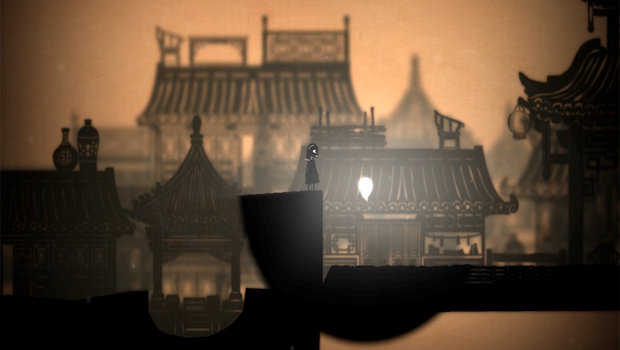With the rise of indie games over the last decade, we’ve seen a rise in profile for smaller scale and experimental platformers. It’s not that they weren’t being made before but with Braid and Limbo, these games were kind of brought to the forefront and helped alert me more to their existence. Since then, I’ve taken a chance on a variety of different games that have both surprised and disappointed me. Projection: First Light is one of the one’s that has surprised me.
Projection: First Light debuted last year in the Apple Arcade but now it has been brought to everything else. Set in a world of shadow puppets, Projection puts players in control of a little girl that causes some trouble and runs away ending up on a globetrotting adventure. Honestly, the narrative, which is told via short cutscenes, is just flavor to set up the thematic flourishes of each area.
It is a puzzle platformer utilizing the shadow puppet backdrop and light. Visually, Projection has a fairly simplistic art style and it works very well to create a striking game. The game is 2D and everything in the foreground is silhouette as they are shadow puppets. The backgrounds add some sense of place (be it Indonesia, China, a train, or even the underworld) and then there is a singular color to provide a little more pizazz. It’s very nice looking. And similarly the music fits right in with the levels adding more to the sense of place.
And as one would expect in a puzzle platformer, the little girl can jump and pull boxes to jump on later but the big deal here is the light and subsequent shadow mechanic. Being as the game is aesthetically set up as a shadow play, light direction is a big deal. And early on in the game, the little girl gets a sprite of light as a companion which can then be used as a moveable light source. By moving the light in different directions, you can create and extend shadows that can then be used as new platforms. Alternately, the light can eliminate shadow and open up areas for traversal and exploration. The controllable sprite is constant but it can also light up other light sources creating a web of shadows or openings to move in.
This light mechanic is the primary driver of the gameplay and the puzzles in the game and outside of a few levels, precision platforming is rarely necessary because the key to everything is the light manipulation. And it mostly works wonderfully. The puzzles are fun and can be challenging but I never felt that the solution was out of reach or unfair, even if I got stuck on a few for a little bit. However, the final area does have a chase sequence that felt out of place as it just felt like trial and error until I learned the full route. I’m not sure how it would play with touch controls but with a controller, it plays great and ultimately, I loved playing the game and think it is a great little puzzle platformer.
This review was written with material provided from the developer for the Xbox One. For more on our review process, please read here.


